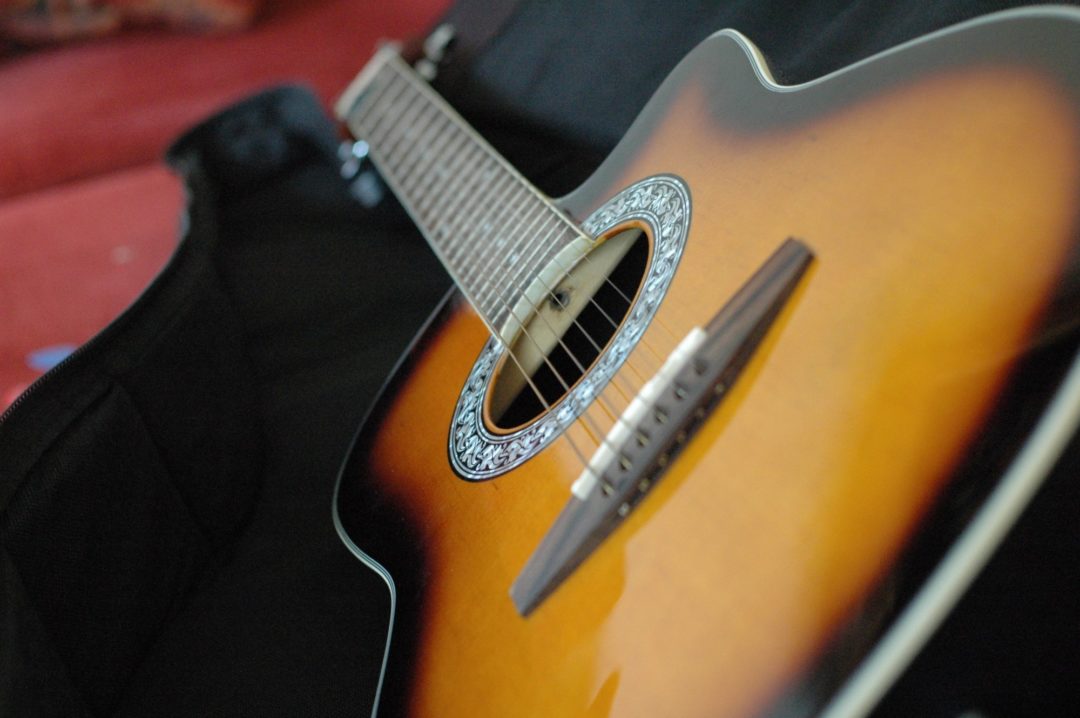
Guitars will naturally acclimate to the environment in which they are stored. This means that they are optimally maintained with just the right of humidity, not too much or too little as both could cause issues. Read on to find out the right humidity for guitar storage:
What is the Ideal Humidity for Guitars?
The proper humidity for guitars is between 40 and 55% for acoustic guitars. This is relative humidity. For electric guitars, this number is slightly different and should be anywhere from 40 to 60% relative humidity.
What is the Ideal Temperature for Guitars?
In addition to humidity, it’s important to maintain a certain temperature for optimal storage. The best temperature for guitar storage is between 70 and 75 degrees Fahrenheit. If the storage room is either hotter or colder than this on the regular, it might be a good idea to store your guitar elsewhere.
Signs of Too Much Humidity
Too much humidity is damaging for a guitar. Excess moisture can cause a guitar to swell, which will eventually cause glue joints to fail, the neck to bend, or even ruin the finish of the guitar. A guitar dehumidifier might be necessary to maintain your guitar if your humidity levels are high.
Look for these signs of too much humidity:
- Bulging frets
- Glue failure
- Warped neck
- Finish coming up or bubbling
- Dull sound from guitar
Signs of Too Little Humidity
Low humidity can be just as damaging for guitar storage. For example, the guitar wood can dry out and crack, leading to fret buzz and protrude.
Here are some of the signs that a guitar is too dry:
- Buzzing action
- Cracks in the wood
- Glue coming off
- Shrinking frets
- Finish cracking
How to Monitor The Humidity of a Guitar
Since humidity levels are so important for the ongoing maintenance of your guitar, you will want to keep a close eye on the humidity levels. To do this, use a guitar hygrometer. This is a digital tool that will read the humidity levels in a storage space. They aren’t expensive and can be kept right in the guitar case, in the open section.

Tips for How to Store Your Guitar
Now that you know how damaging humidity or lack of thereof can be for a guitar and are monitoring both the humidity levels and the temperature levels, keep the following tips in mind to store your guitar:
- Store your guitar in a case or gig bag instead of out in the open.
- Keep them away from windows or drafty doors.
- Keep a silica gel pack in the case to ensure excess moisture is dried.
- Dry your guitar after playing to make sure that any excess moisture is removed before storing.
- Make sure you store your guitar out of direct sunlight.
Here’s What Not to Do
Be sure to avoid the following no, no’s when it comes to optimal guitar storage:
Do not…
- Keep the guitar by a window.
- Leave the guitar in a car either overnight or during the day.
- Keep the guitar by a fireplace or radiator.
- Store a guitar in a basement, loft, or attic.
- Leave it out of its case for longer than a day or two.
- Let it get wet.
Guitar storage is part of properly maintaining your guitar and getting as many years as possible out of your instrument. Keep the above tips in mind to ensure your guitar is neither kept in too humid nor too dry of an environment.
People Also Ask
‘What Humidity Should Guitars Be Stored At?
Guitars should ideally be stored at a humidity level between 40% and 55% relative humidity for acoustic guitars. For electric guitars, the acceptable range is slightly broader, between 40% and 60%.
At What Humidity Do Guitars Crack?
Guitars are at risk of cracking when the humidity drops below 40%. Low humidity can cause the wood to dry out, shrink, and eventually crack.
How Often Should You Humidify Your Guitar?
You should regularly check your guitar’s humidity levels and humidify it whenever the environment dips below 40% relative humidity. Using a guitar hygrometer helps monitor the humidity, and a guitar humidifier can be placed in the guitar case for continuous moisture control.
How to Humidify a Room For Guitars?
To humidify a room for guitars, use a room humidifier to maintain the relative humidity within the optimal 40-55% range. Keep the room sealed to prevent moisture from escaping, and use a digital hygrometer to track the humidity levels.
